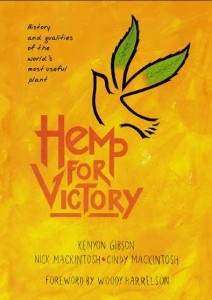In the not too distant past, entire nations, empires to wit, depended on its availability; Russia, the chief supplier in the 17th-19th centuries, sold to both the British and the American navies. Britain and America themselves grew at that time no small amount, and both nation's legislators expressed alarm at the rate of expenditure on foreign hemp for their military. The superior quality and price of Russian hemp, however, ensured that Western powers relied on Russia's. Thus it was once the world's most traded commodity and cultivated nearly worldwide not only for its commercial value, but for the fact that many of its products, in addition to rope and sails, were necessary to survival; Thomas Jefferson, for instance, exhorted it be grown for the wealth and defense of the colonies. Over a century after his advice, the United States was eager to cultivate this crop and produced a film in WWII titled "Hemp for Victory." The threat to rope supplies in the Pacific prompted the legislature to make sure that American farmers were able and willing to plant hemp.
With the advent of metal ships running on steam and petroleum sails became almost obsolete, and abaca from the Philippines replaced hempen cordage on modern ships. Despite a dramatic downturn in demand in the maritime industry, this plant continued to be grown into the 20th century, providing a range of products from paper to food. It excelled in both of these categories, as its long and strong fibres interlocked perfectly for long lasting paper (the oldest existing fragment of paper is 2,000 years old and contains hemp) and its Omega 3,6 & 9 rich seeds full of all essential amino acids were excellent for food. Farmers also found the plant not only easy to grow in most countries of the world, but it acted as a natural pesticide (with one US cotton farmer sowing it on one third of his land at a time to rid the soil of pests).
Many changes in the law, however, in the 1930s to the 1960s in the US and other nations made hemp illegal, as these laws mistakenly lumped all forms of Cannabis sativa
in with high THC producing strains known as marijuana. A few nations continued to cultivate hemp; mainly China, which today profits from its policy. Western nations have
had a reawakening due to activists who struggled to make hemp not only legal but in some countries a subsidized species. These efforts have largely paid off, and there is presently a thriving hemp textile and hemp oil industry.
All of which might bode well for the US, as hemp, which was such a part of its history that the first US flag was made of it, can be grown in all 50 states. However, the present status of hemp is prohibitive, even with the recent ruling at the federal level that states may decide for themselves whether to allow its cultivation. So far, only two states have made cultivation legal: Colorado and Kentucky. Both were largely responsible for the change in the federal law, with farmers in the former sowing 60 acres of hemp in a field before the change; thus challenged, Washington lawmakers saw the gauntlet on the ground and conceded. Soon afterwards, a complex battle in the Kentucky House ensued, perhaps an epic note in American history, with both Republican senators, Rand Paul and Mitch McConnell, supporting the hemp issue in Washington, while a Democrat worked hard to keep it illegal. The governor promptly signed the bill, allowing the Bluegrass state, which was in the 19th and into the 20th century the hemp-basket of America, to regain its heritage.
While hemp is still illegal to cultivate in 48 states, and not yet produced in any quantity in Colorado or Kentucky, many American businesses manufacture hemp items, the largest sector being the hempseed oil industry, which sources its oil mainly from Canada, where farmers are profiting greatly from America's ban. A number of other firms manufacture hemp clothing, such as Minawear in Texas, which started in 1998 in California when the hemp movement was still rather small. The years of manufacturing hempen apparel by this and other companies has brought hemp to the awareness of the general public and has helped to restore the crop to legality in the US.
Another outfit in the same state working in this field is Canvasland, which makes artist's canvas - which are not only archival quality but true to original material; the use of hemp for canvas is of such longstanding practice that the very word 'canvas' derives from 'cannabis'; canape in Italian, chanvre in French. Hemp was a major crop in many Renaissance countries, including Italy and the Netherlands. Not only was the textile used in art, but also the oil, which is clear and long-lasting. This last mentioned use of hemp is one that is not yet available on a commercial level, but is being researched by artists with a view to only bottling hemp oil as an art supply but also in finding the best variety among the thousands of varieties of hemp for this purpose, with the possibility that in the future it will replace linseed and safflower oils, both of which are prone to some degree of yellowing.
From the innovative to the well established, hemp has many uses, making it an essential part of the economy, as well as being a top choice ecologically, given the fact that it needs less water than cotton and also far less pesticides. Since there is no real reason not to cultivate it, and every reason to do so, it is the challenge of this present generation to reverse the mistakes of our predecessors and restore hemp to its place in our fields and the marketplace, hopefully succeeding and earning the respect of future generations.
Kenyon Gibson is the author of Hemp for Victory